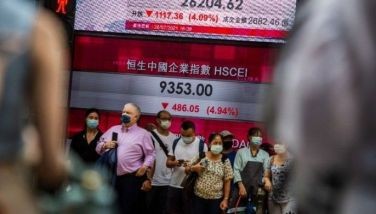Phiilippines economy to grow 6.4% this year – WB
MANILA, Philippines - Philippine economic growth is forecast to slow to 5.8 percent in 2015 before recovering to 6.4 percent this year, the World Bank said in its latest report.
It said as growth would be sustained above six percent in the next two years, the Philippines would be able to grow an annual average of approximately 6.23 percent, maintaining its upward trajectory although at a slower pace.
In its Global Economic Prospects 2016 report, the World Bank cited the Philippines and Vietnam among the countries in East Asia with the strongest growth prospects.
“In the Philippines, growth is projected to firm to 6.4 percent in 2016, reflecting accelerated implementation of public-private partnership (PPP) projects and spending related to the May 2016 presidential election,” it said.
However, the World Bank cautioned the Philippines of the poor entry of foreign direct investments (FDIs). “FDI has lagged, partly owing to regulatory restrictions,” it said.
In 2010, FDI inflows into the Philippines amounted to $1.07 billion while those to Indonesia stood at $13.8 billion, almost 13 times more than those that went into the Philippines.
From 2011 to 2013, FDI inflows steadily moved up in the Philippines, from $2 billion (in 2011) to $3.86 billion (in 2013).
In Vietnam, growth is expected to expand at an average 6.3 percent in 2016-18. Contributing to the gains are rapid investment growth buoyed by robust confidence and FDI, consumption growth fueled by solid labor markets, and export growth as Chinese FDI projects in export industries come onstream.
On the revenue side, the World Bank said the Philippines needs to broaden its tax base as well as strengthen public revenue administration.
China has increased trade with most of East Asia to a critical point, practically unseating Japan as the main trading partner of the region.
China is now the largest trading partner for Australia, Hong Kong, Malaysia, Myanmar, New Zealand and Thailand. It represents the second-largest trading partner for Indonesia and Lao PDR, and the third largest for the Philippines.
Meanhile, growth in the East Asia and Pacific region slowed to an estimated 6.4 percent in 2015 from 6.8 percent the previous year, because of continued growth deceleration in China and in commodity exporters, including Indonesia and Malaysia.
“Despite the slowdown in commodity exporters, growth in the region excluding China was broadly flat (4.6 percent in 2015), thanks to strong performance in commodity importers, especially in Vietnam and the Philippines, and a moderate recovery in Thailand,” the report said.
East Asia and Pacific region is projected to slow to 6.3 percent in 2016, with China’s expansion expected to ease to 6.7 percent. The region, excluding China, is anticipated to see growth accelerate modestly in 2016 to 4.8 percent.
Slowing growth in China is expected to offset a modest pickup in growth among members of the Association of Southeast Asian Nations (Asean) this year.
The region is expected to benefit from the strengthening recovery in advanced economies, low energy prices, improved political stability, and continued favorable conditions in global financial markets, despite anticipated monetary policy tightening in the United States.
Growth in Indonesia is projected to pick up to 5.3 percent in 2016 from 4.7 percent, provided reforms are implemented to encourage investment and boost productivity.
- Latest
- Trending



























